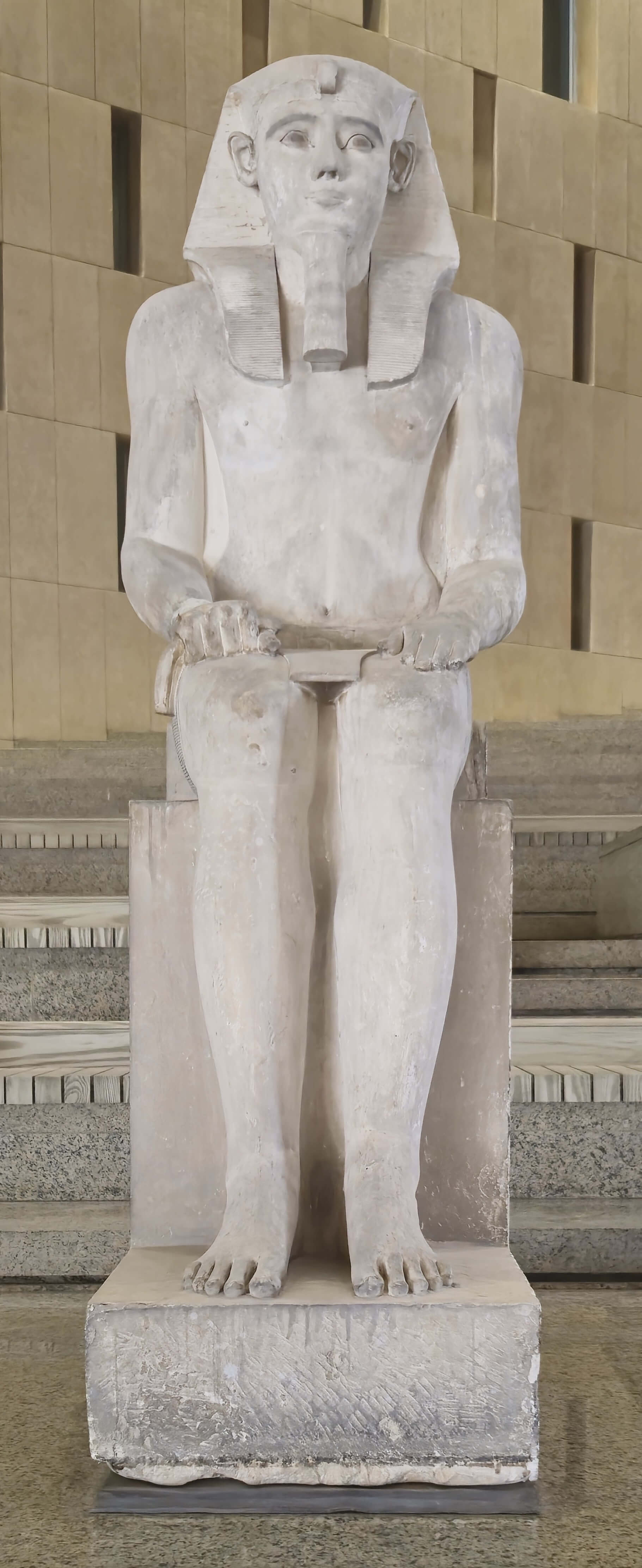
GEM 81975
King Senwosret I
The vast pyramid complex of King Senwosret I (reigned c. 1965–1911 BCE) at Lisht, near the edge of the Nile Valley, was one of the grandest mortuary projects of the Middle Kingdom. Designed not only as a royal tomb but also as a statement of divine kingship and eternal order, the complex was richly adorned with statuary. According to archaeological evidence and the inscription in this image, the complex was embellished with multiple statues of the king, positioned along the processional route that led from the Nile Valley up to the pyramid itself.
This processional way, or causeway, likely formed the central ceremonial axis of the funerary complex. It was flanked by standing statues of the pharaoh, creating a powerful visual corridor. These statues were more than artistic adornments—they symbolized the king’s divine presence and continued authority, even in the afterlife. Every visitor, priest, or participant in royal rituals would have passed under the stony gaze of the monarch, reminded of his power and legitimacy.
At the end of this causeway stood the valle ... Discover more with Premium!
Unlock the Full Story of This ArtifactUpgrade to premium to access the complete description, audio guides, and exclusive content for all artifacts.Access the full audio and description for the GEM's main artifacts for only $1.99
Looking For Another Artifact ?